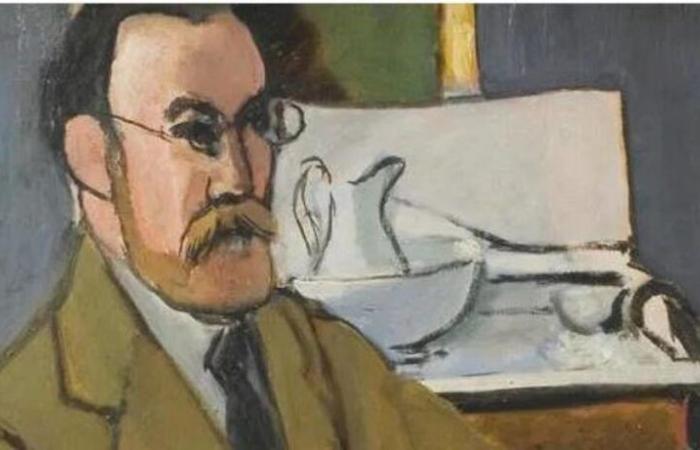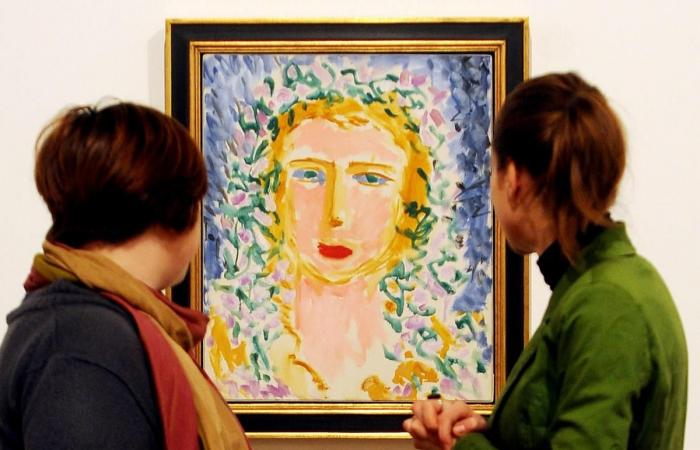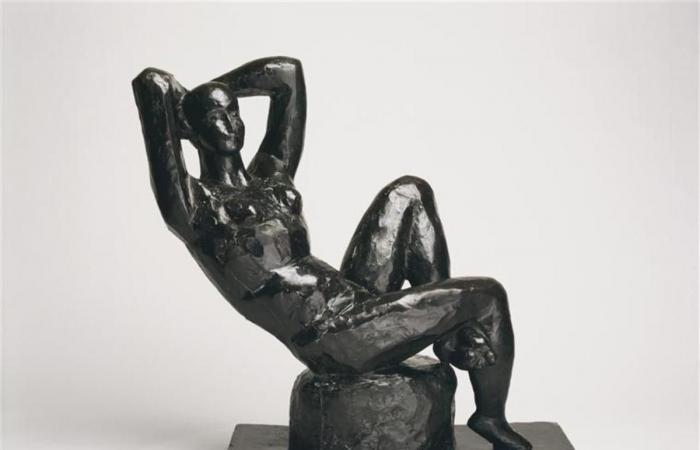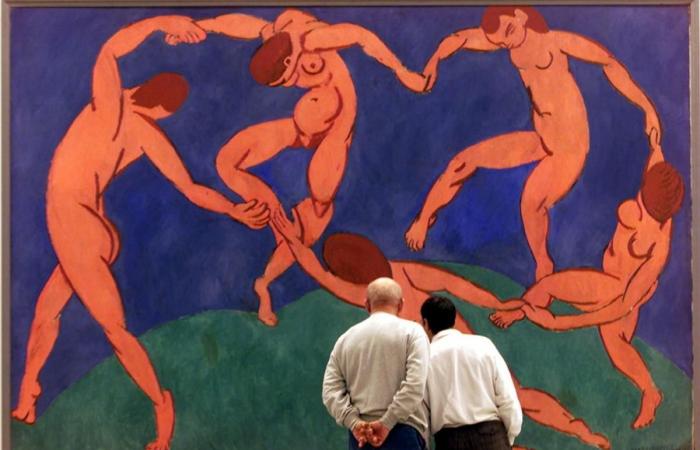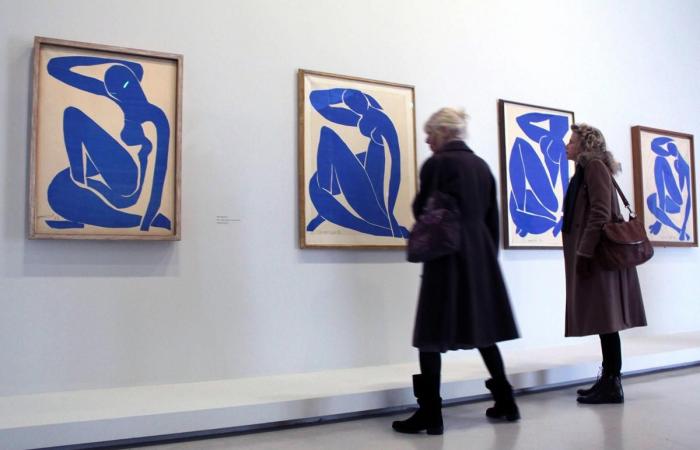His vocation was declared at the dawn of his 20s. Victim of an attack of appendicitis, he stayed in hospital where he found the time long. To keep him busy, his mother gives him a box of paint. A future notary clerk, he abandoned his law studies and embarked on an artistic course. He leaves his native region to settle in Paris, where he plans to attend the school of fine arts. He fails, but does not give up, convinced of having found his destiny. Eager to learn, he enrolled at the School of Decorative Arts and discovered drawing. In 1895, Gustave Moreau's workshop finally opened its doors to him. The master encouraged his students to think beyond the technical, and detected in Matisse a desire to “simplify art”. He devoted his early career to classical still life painting, before becoming interested in bright colors.
In this photo taken in 1952, the French painter and sculptor cuts colorful shapes in his studio at the Regina Hotel, in Nice, southern France.
AFP
The emergence of Fauvism
In less than ten years, Matisse became the father of three children. His daughter Marguerite, born in 1994, is the fruit of his relationship with his model Caroline Joblaud. Later, he married Amélie Parayre, who gave him two sons, Jean and Pierre. The family settled in Corsica, a land which inspired the artist to produce no less than fifty paintings. His meeting with Paul Signac, a pointillist painter, allowed him to discover the south of France. At his side, he created one of his emblematic works “Luxury, calm and voluptuousness”, which reveals his attraction to colors.
AFP
Here, people look at a painting by French painter Henri Matisse on February 26, 2010 at the Cateau-Cambrésis museum in northern France.
It was in the summer of 1905, during a vacation in Collioure, that Matisse met the painter André Derain. Fans of works in fiery colors, the two artists are singled out, considered outrageous. Together, they created Fauvism. A bold movement, characterized by textured brushstrokes and pure hues, that is shaking up the world of painting. Created in 1905, “The Joy of Living,” a flagship piece from the Matisse collection, appeals to Pablo Picasso, impressed by his freedom to create. The two artists will never stop competing against each other through their works, creating a decadent rivalry between two figures of the 20th century.
Nice, city of heart
After spending part of the winter of 1916-1917 in Nice, Matisse decided to stay longer on the Côte d'Azur, which he considered a paradise. In 1920, the famous show organizer, Serge Diaghilev, asked him to imagine the costumes and sets for the ballet “Le Chant du rossignol”. The artist, who constantly wishes to renew himself, willingly accepts this exercise, which allows him to move away from his comfort zone and his usual flat surfaces. In 1924, Matisse turned to sculpture with “Large Seated Nude”, an example of his style which combines arabesques and angles.
South West Archives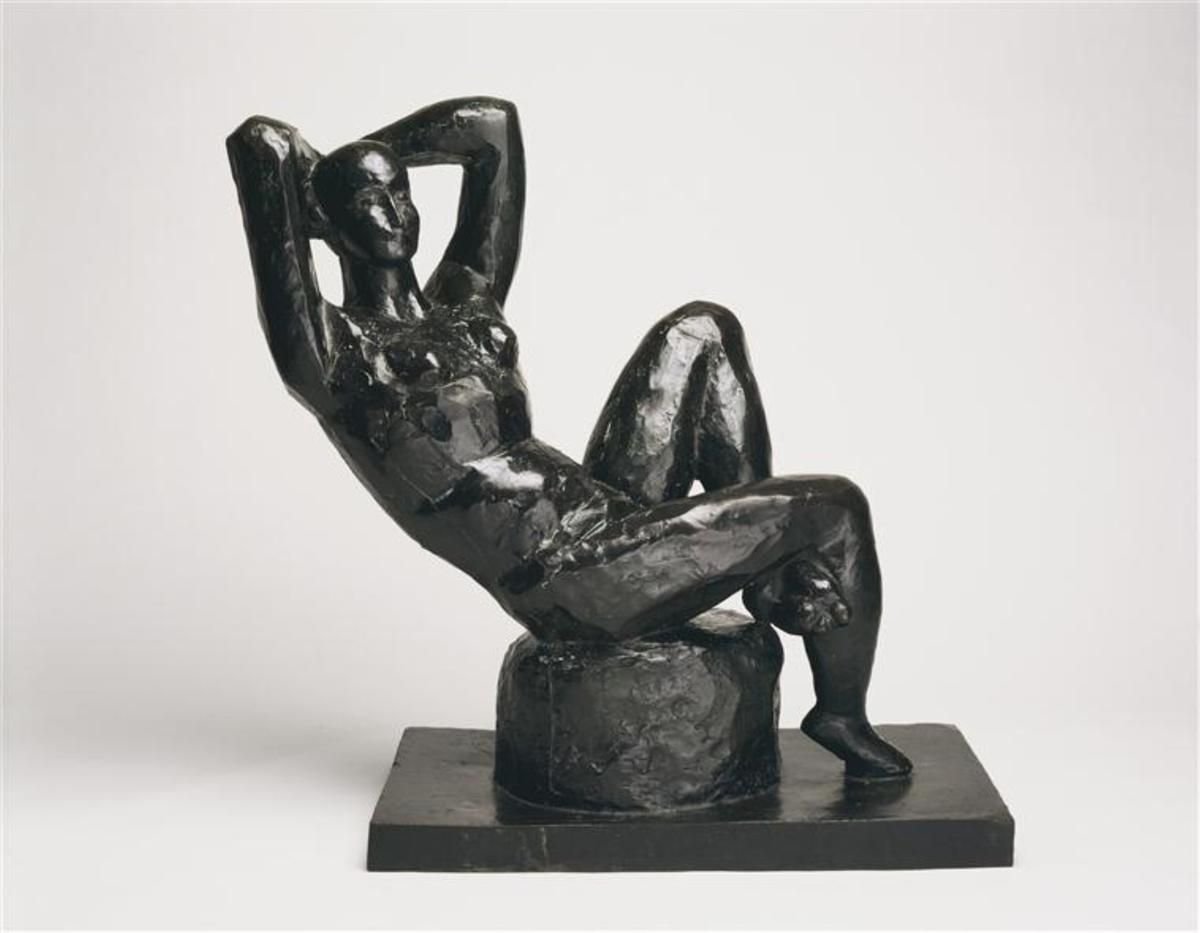
Photo of the sculpture “Large seated nude” created in 1924 by the artist Henri Matisse. It is a sample of his style, both in arabesques and angles.
“The Nice period” is marked by his creation of still lifes, nudes, or even odalisques, which he perceives not to accessorize. In the 1930s, a trip to the United States and Tahiti transformed his vision of space and inspired him to create decorative works. On his return, he worked on “The Dance” for Doctor Albert Barnes, integrating his new ideas into ambitious projects.
AFP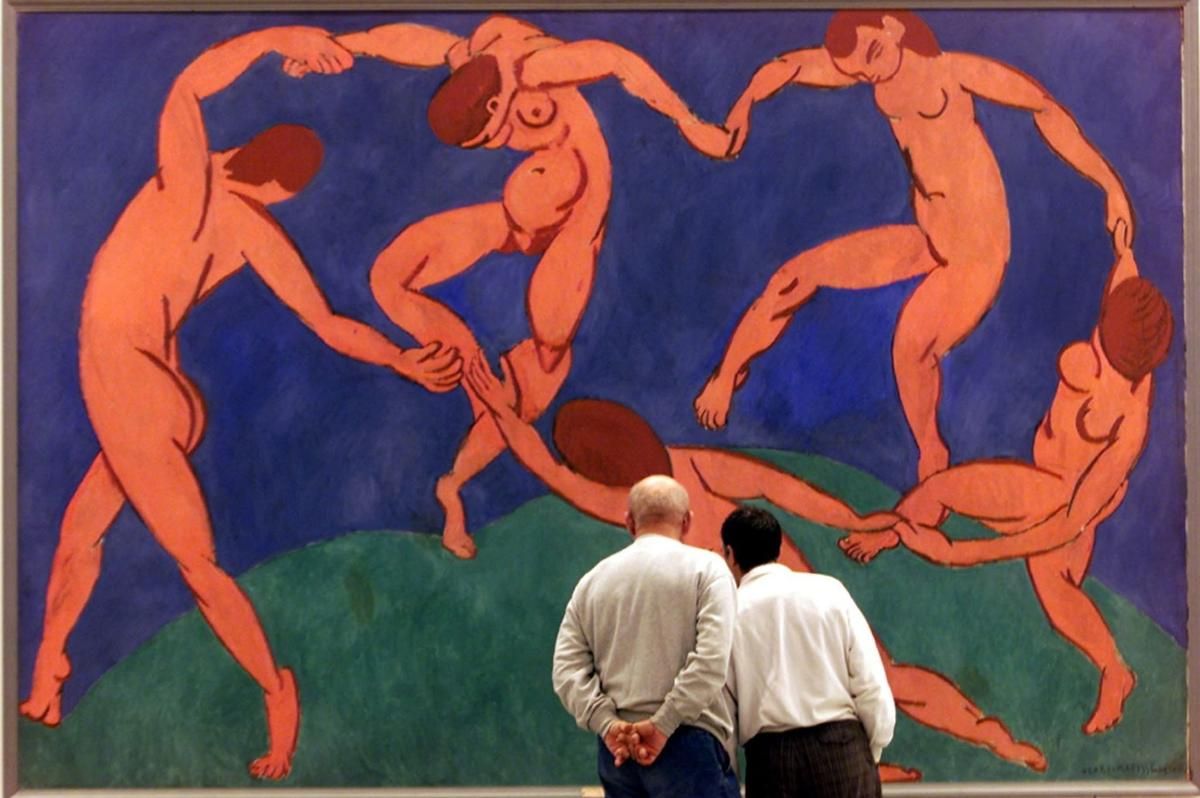
Photo taken on December 21, 1999 in Rome, of visitors admiring the painting “La Danse” by Matisse.
In 1941, while facing cancer, Matisse innovated with the technique of paper cutouts, creating vibrant and dynamic compositions. He was also involved in the design of the Chapelle de Vence, where he combined his talent as an artist with that of an architect and designer, making this space a living testimony to his artistic quest.
>Find all our archives on Henri Matisse in our search engine
Eternal legacy
Matisse died on November 3, 1954 in Nice, but the artist's influence on the art world continues. He redefined the boundaries of painting with his audacity, his quest for simplification and his innovative use of color. Recognized during his lifetime, he left his mark not only on his contemporaries, but also on generations of artists, both in France and in the United States. Figures like Sam Francis and Andy Warhol have been deeply influenced by his work, testament to Matisse's lasting impact on contemporary art.
AFP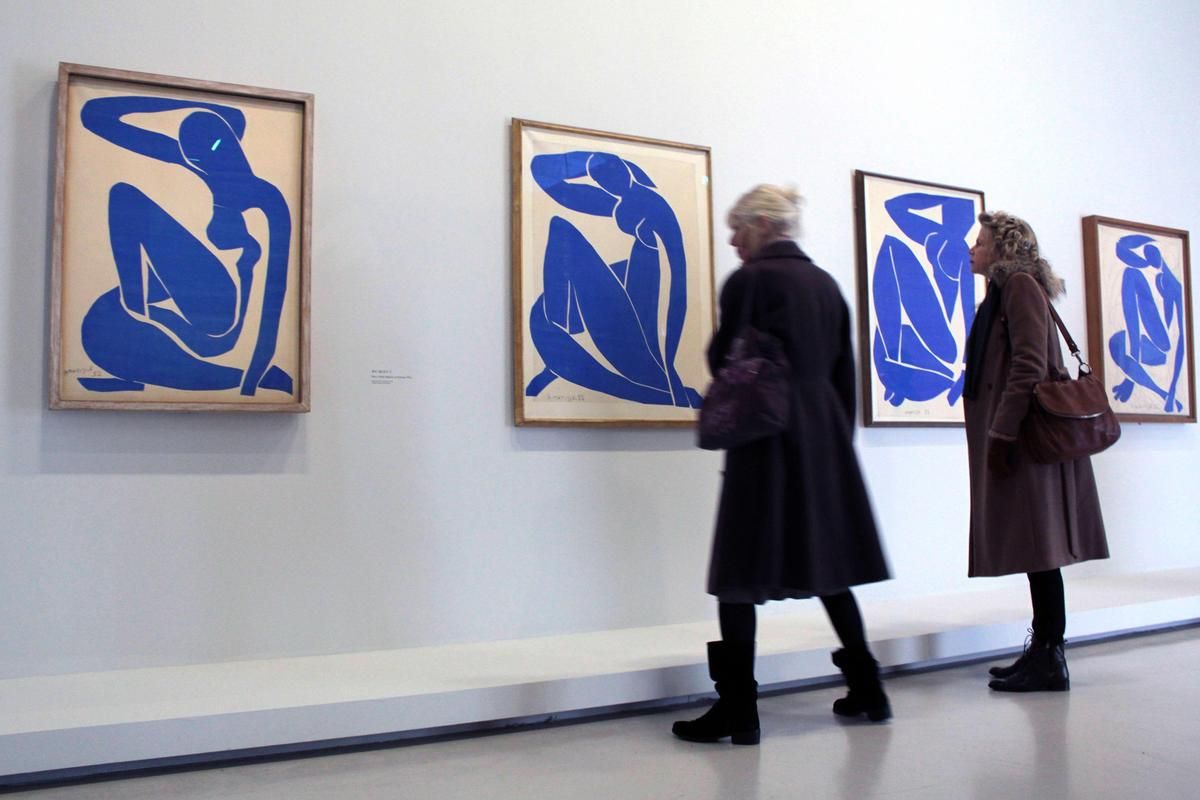
Visitors look at paper cutouts painted with gouache and stuck on paper mounted on canvas by Frenchman Henri Matisse, on March 6, 2012, at the Georges Pompidou National Museum of Modernity in Paris.

